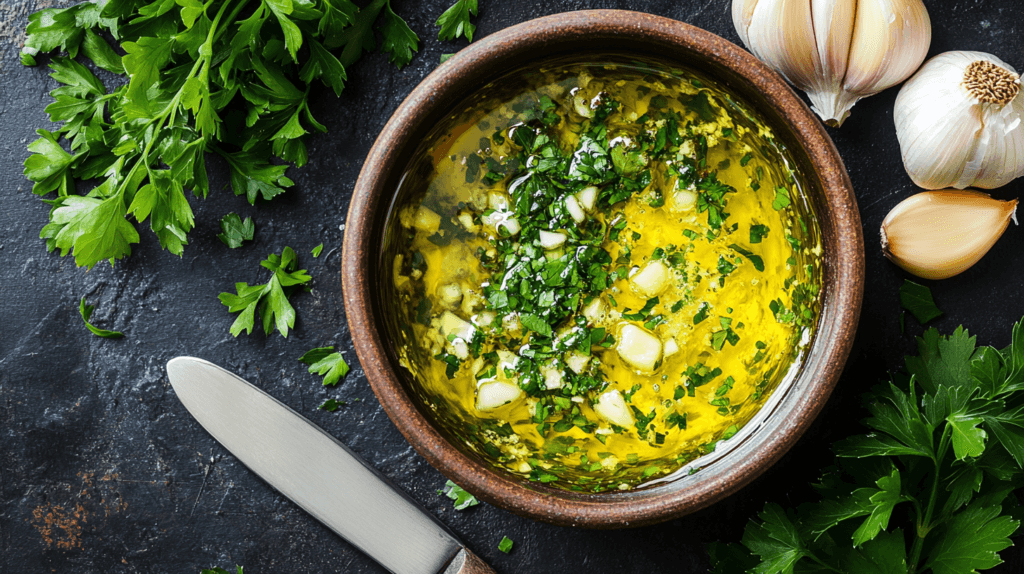How Do I Thicken Seafood Boil Sauce? Seafood boils are a staple of coastal cuisine, offering a delightful mix of flavors, textures, and aromas. At the heart of any great seafood boil lies the sauce—a blend of spices, butter, and seasonings that elevate the dish. However, achieving the perfect sauce consistency is a challenge many face. A thin sauce may fail to coat the seafood properly, diluting the taste. So, if you’re wondering how do I thicken seafood boil sauce, this guide will explore the best methods and ingredients to achieve a luscious, rich texture while keeping the flavors intact.
Table of Contents
Understanding Seafood Boil Sauce
Seafood boil sauce is the crown jewel of any seafood feast, tying together the bold flavors of shrimp, crab, corn, and potatoes. Its combination of butter, spices, and aromatic ingredients is what makes it truly special.
Ingredients Typically Used
Seafood boil sauces often have a rich, buttery base that serves as the foundation for all the other flavors. Common ingredients include:
- Butter: Provides richness and helps the sauce coat the seafood evenly.
- Garlic: Minced or crushed, garlic adds a savory depth to the sauce.
- Lemon Juice: Adds acidity and brightness, balancing the richness of butter and spices.
- Spices: Old Bay seasoning is a staple, complemented by paprika, cayenne pepper, chili powder, or black pepper for heat and complexity.
- Broth or Water: Used to adjust the consistency and enhance the flavor, particularly if seafood broth is available.
- Herbs: Fresh parsley, cilantro, or thyme are often added for a touch of freshness.
These ingredients combine to create a sauce that is rich, slightly spicy, and tangy. It’s designed to cling to the seafood and enhance its natural flavors.
Texture and Flavor Profile
The ideal seafood boil sauce is smooth, velvety, and slightly thickened, allowing it to adhere to each piece of seafood. A sauce that’s too thin may fail to coat effectively, while one that’s too thick can overpower the seafood. Striking the right balance is crucial for enhancing the dish without detracting from the main ingredients.
Why Would You Want to Thicken Seafood Boil Sauce?

A perfectly thickened seafood boil sauce elevates the dining experience in several ways. Here’s why you’d want to ensure the right consistency:
Enhancing Flavor Concentration
Thickening the sauce intensifies its flavors. As the liquid reduces or thickens, the spices, butter, and other seasonings become more concentrated. This creates a robust flavor profile that complements the delicate taste of seafood. Imagine every bite bursting with spicy, garlicky goodness!
Improving Sauce Coverage on Seafood
A thicker sauce adheres better to the seafood, ensuring each piece is coated evenly. Thin sauces often run off, leaving the seafood under-seasoned. When the sauce clings to the shellfish, corn, and potatoes, it creates a more flavorful and satisfying experience.
Adding Visual Appeal
Thickened sauces have a glossy, luscious appearance that makes the dish look more appetizing. A thin sauce can appear watery and less appealing, detracting from the dish’s overall presentation.
Preventing Sauce Separation
Butter-based sauces can sometimes separate if they’re too thin. Thickening the sauce stabilizes the emulsion, ensuring a cohesive and smooth texture throughout the meal.
Common Methods to Thicken Seafood Boil Sauce
When your seafood boil sauce needs thickening, several reliable methods can help you achieve the perfect consistency. Each technique has its unique advantages and flavors to consider.
Using Cornstarch
Cornstarch is one of the most popular and effective thickening agents for seafood sauces:
- Create a Slurry: Mix 1-2 tablespoons of cornstarch with an equal amount of cold water to form a smooth mixture.
- Add Gradually: Slowly pour the slurry into the simmering sauce while whisking continuously to prevent lumps.
- Simmer: Allow the sauce to cook for 2-3 minutes, stirring frequently, until it reaches the desired thickness.
Cornstarch is quick-acting, gluten-free, and doesn’t alter the sauce’s flavor.
Adding Flour
Flour is another versatile thickener, though it requires a bit more preparation:
- Make a Roux: Combine 1 tablespoon of flour with 2 tablespoons of melted butter or oil in a small pan. Cook over medium heat until it forms a paste and turns golden brown.
- Incorporate into Sauce: Gradually whisk the roux into the sauce, stirring until fully blended.
- Cook Thoroughly: Let the sauce simmer for a few minutes to eliminate any raw flour taste.
Flour adds a slight richness to the sauce and is ideal for creating a thicker, creamier consistency.
Simmering and Reducing
For those who prefer a natural approach, reducing the sauce is an excellent option:
- Cook on Low Heat: Let the sauce simmer uncovered in a wide pan.
- Stir Occasionally: Stir every few minutes to prevent burning and promote even thickening.
- Monitor Consistency: Continue simmering until the liquid reduces to your desired thickness.
This method not only thickens the sauce but also concentrates its flavors, making it richer and more intense.
Using Heavy Cream or Coconut Milk
If you’re looking for a creamy texture, adding dairy or non-dairy alternatives can work wonders:
- Heavy Cream: Adds a luxurious, velvety texture while mellowing spicy flavors.
- Coconut Milk: Thickens the sauce and adds a subtle sweetness that complements seafood.
Simply stir in ½ cup of your chosen ingredient and let the sauce simmer until thickened.
Adding Starchy Ingredients
Mashed or pureed starchy vegetables like potatoes or sweet potatoes can be blended into the sauce for natural thickening. This method is especially useful if you want to avoid flour or cornstarch.
Using Alternative Thickeners
- Xanthan Gum: A modern, gluten-free thickener that works instantly and requires only a small amount.
- Arrowroot Powder: Mix with cold water before adding to the sauce for a clear, glossy finish.
Each of these methods allows you to tailor the sauce to your preferred consistency and flavor profile.
Natural Ways to Thicken Seafood Boil Sauce
Simmering and Reducing
One of the simplest ways to thicken seafood boil sauce is by simmering it. This method involves allowing the sauce to cook on low to medium heat, reducing the liquid content naturally. Here’s how to do it:
- Pour the sauce into a wide saucepan.
- Let it simmer uncovered, stirring occasionally to prevent sticking.
- Cook until the sauce reaches your desired consistency.
This method intensifies the flavor, as the reduction concentrates the spices and seasonings.
Incorporating Starchy Vegetables
Using starchy vegetables like potatoes or sweet potatoes can naturally thicken your sauce:
- Mashed Potatoes: Add a small amount of mashed potatoes to the sauce, stirring until it’s fully integrated.
- Pureed Vegetables: Steam starchy vegetables, puree them, and blend them into the sauce for a thicker consistency and added depth of flavor.
Using Dairy or Cream Alternatives to Thicken Sauce
Heavy Cream or Coconut Milk
Adding dairy products like heavy cream can provide a rich, creamy texture:
- Stir ½ cup of heavy cream into the sauce and let it simmer until thickened.
- For a non-dairy option, use coconut milk for a tropical twist. It thickens the sauce while adding a subtle sweetness that pairs well with seafood.
How Dairy Affects Flavor and Texture
Dairy can mellow out the heat and spice in the sauce, balancing strong flavors. However, it’s important to add it gradually to avoid overpowering the dish.
Thickening with Alternative Ingredients
Xanthan Gum
Xanthan gum is a modern thickening agent derived from natural sugars. It’s incredibly effective and requires only a small amount:
- Sprinkle ¼ teaspoon of xanthan gum into the sauce while whisking vigorously.
- Continue stirring until the sauce thickens evenly.
It’s gluten-free and ideal for those with dietary restrictions.
Arrowroot Powder
Arrowroot powder is another excellent thickener:
- Mix 1 tablespoon of arrowroot powder with 2 tablespoons of cold water to create a slurry.
- Add the slurry to the sauce and stir over low heat until thickened.
Arrowroot is flavorless and works well in sauces with acidic ingredients like lemon juice.
Avoiding Common Mistakes When Thickening Seafood Boil Sauce
Over-Thickening Issues
Adding too much thickening agent can result in a sauce that’s overly dense and gloopy. To avoid this:
- Always add thickeners gradually and monitor the consistency as you go.
Avoiding Lumps
Lumps can ruin the smooth texture of your sauce. Prevent this by:
- Whisking continuously while adding thickeners.
- Mixing dry ingredients like flour or cornstarch with cold water before incorporating them.
Enhancing Flavor While You Thicken Seafood Boil Sauce

Adding Garlic Butter
Incorporate garlic butter to thicken and enhance the sauce’s richness. Melted garlic butter not only thickens but also boosts the sauce’s savory notes.
Integrating Herbs and Spices
As you thicken the sauce, consider adding fresh herbs like parsley or cilantro for a burst of freshness. Ground spices like smoked paprika can also deepen the flavor profile.
Recipe for Thickened Seafood Boil Sauce
Ingredients
- 1 cup unsalted butter
- 1 tablespoon olive oil
- 6 cloves garlic, minced
- 2 tablespoons lemon juice
- 2 tablespoons Old Bay seasoning
- 1 teaspoon smoked paprika
- ½ teaspoon cayenne pepper (optional, for extra spice)
- 2 tablespoons cornstarch or flour (for thickening)
- 1 cup seafood broth or water
- Salt and pepper to taste
- Optional: Fresh parsley for garnish
Step-by-Step Instructions
- Melt Butter and Sauté Garlic
In a large skillet, melt the butter over medium heat. Add olive oil to prevent the butter from burning. Sauté the minced garlic until fragrant (about 1-2 minutes). - Add Seasonings and Liquid
Stir in the Old Bay seasoning, smoked paprika, cayenne pepper, and lemon juice. Gradually pour in the seafood broth or water, whisking to combine. - Thicken the Sauce
- If using cornstarch, mix 2 tablespoons with an equal amount of cold water to form a slurry. Slowly add the slurry to the sauce, whisking continuously.
- If using flour, create a roux by mixing the flour with a bit of the melted butter. Add the roux to the sauce, stirring until it thickens.
- Simmer and Adjust
Reduce the heat and let the sauce simmer for 3-5 minutes until it reaches your desired thickness. Taste and adjust salt and pepper as needed. - Optional Enhancements
Sprinkle fresh parsley on top for color and flavor. Serve warm over seafood boil or as a dipping sauce.
FAQs on Seafood Boil Sauce
1. Can I thicken seafood boil sauce without cornstarch or flour?
Yes, you can use natural methods like simmering and reducing the sauce or adding pureed starchy vegetables. For instance, learning about Is Purple Sweet Potato Good for Weight Loss? could give you ideas for incorporating healthy starches into your sauce.
2. How do I prevent a floury taste in the sauce?
Cook the flour thoroughly when making a roux or mixing it into the sauce. This eliminates any raw flour taste and enhances the sauce’s flavor.
3. Can I use dairy to thicken seafood boil sauce?
Absolutely! Heavy cream or half-and-half can be added for a creamy texture. Coconut milk is a great non-dairy option. If you want to understand more about dairy options, check out How Much Cottage Cheese Should I Eat a Day?.
4. Will thickening the sauce affect its flavor?
Thickening concentrates the flavors. However, if you over-thicken, it may alter the balance of spices, so adjust seasonings as needed.
5. How do I fix a sauce that’s too thick?
Simply add a splash of seafood broth, water, or melted butter to thin it out. Stir continuously until the sauce reaches your preferred consistency.
6. Can I prepare the sauce in advance?
Yes, you can make the sauce ahead of time and reheat it. If it thickens too much while cooling, add a bit of liquid when reheating.
Conclusion
Thickening seafood boil sauce is an essential step to elevate your seafood feast. Whether you prefer traditional methods like cornstarch and flour or natural options like reducing and using starchy vegetables, the right approach depends on your taste and dietary needs. By following these tips and techniques, you can achieve a perfectly thick, flavorful sauce that clings to every bite of seafood, enhancing the entire dish. Now, it’s time to grab your apron and perfect that sauce!
For more inspiration, explore Crab Brûlée Recipe: A Decadent Seafood Delight and learn new ways to impress with seafood dishes.
Printable Recipe Card
Want just the essential recipe details without scrolling through the article? Get our printable recipe card with just the ingredients and instructions.

